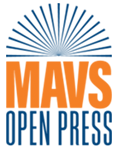126 1.2 Technical and Professional Communication
Like many technical disciplines, technical communication has an international professional organization, The Society for Technical Communication (STC.org). It characterizes technical and professional communication as either “about technical or specialized topics,” communication that “us[es] technology, such as web pages, help files, or social media sites,” or communication that “provid[es] instructions about how to do something” (STC.org, 2024). In other words, technical and professional discourses involve communicating complex information to a specific audience who will use that information to accomplish some goal or task in a manner that is accurate, useful, and clear. Based on this definition, technical and professional communication can be described as:
Purposeful
Goal oriented (in terms of both hard goals like project deadlines and soft goals like rapport-building and maintaining)
Aimed at audiences of stakeholders with agency and/or relevant credentials
Shaped by the discursive conventions of a professional community.
When you write an email to your professor or supervisor, develop a presentation or report, design a sales flyer, or create a webpage, you are engaging in technical and professional communication. Along those lines, “technical” and “professional” are used interchangeably throughout this textbook when referring to writers and/or writing produced by them. In this textbook, the word “document” refers to any of the many forms of technical writing, whether it is a web page, an instruction manual, a lab report, or a travel brochure.

